Emergency Medicine (EM) /Critical Care Ultrasound (CCU) is a specialized form of ultrasound imaging focused on diagnosing and managing critically ill patients, particularly in the emergency medicine or intensive care settings. It involves the real-time visualization of internal organs and structures using high-frequency sound waves, providing valuable information for rapid assessment and decision-making in time-sensitive situations.

Defining Emergency and Critical Care Ultrasound
Emergency and Critical Care ultrasound involves the specialized use of ultrasound to assess specific medical conditions seen in the emergency department or intensive care setting. There is some over-lap of the ultrasound applications performed in the EM and CCU settings, but each specialty practice incorporates additional applications that are specific to each echelon of care. Common ultrasound applications for both EM and CC specialty practices include evaluation of cardiac function, abdominal pathology, trauma, procedural guidance, DVT assessment, cardiac arrest or pre-cardiac arrest states, and monitoring response to treatment.
Point-Of -Care Ultrasound (POCUS)
Many providers use the term Point-of-Care Ultrasound (POCUS) as a broad term to include any focused ultrasound evaluation performed at the patient bedside, including EM and CCU however, also includes other specialty applications such as anesthesiology, musculoskeletal, Pre-hospital / Emergency Medical Services (EMS), and family medicine ultrasound.
The portable nature of POCUS technology enables the provider to obtain immediate diagnostic information in the emergency, intensive care, and pre-hospital settings where timely decision making and intervention are critical to patient care.
The use of POCUS eliminates the need to transport the patient to a dedicated imaging department, or the use of radiation based imaging such as X-Ray or Computed Tomography (CT) scans improving time to diagnosis and treatment, ultimately contributing to improved patient outcomes, safety, and patient satisfaction.
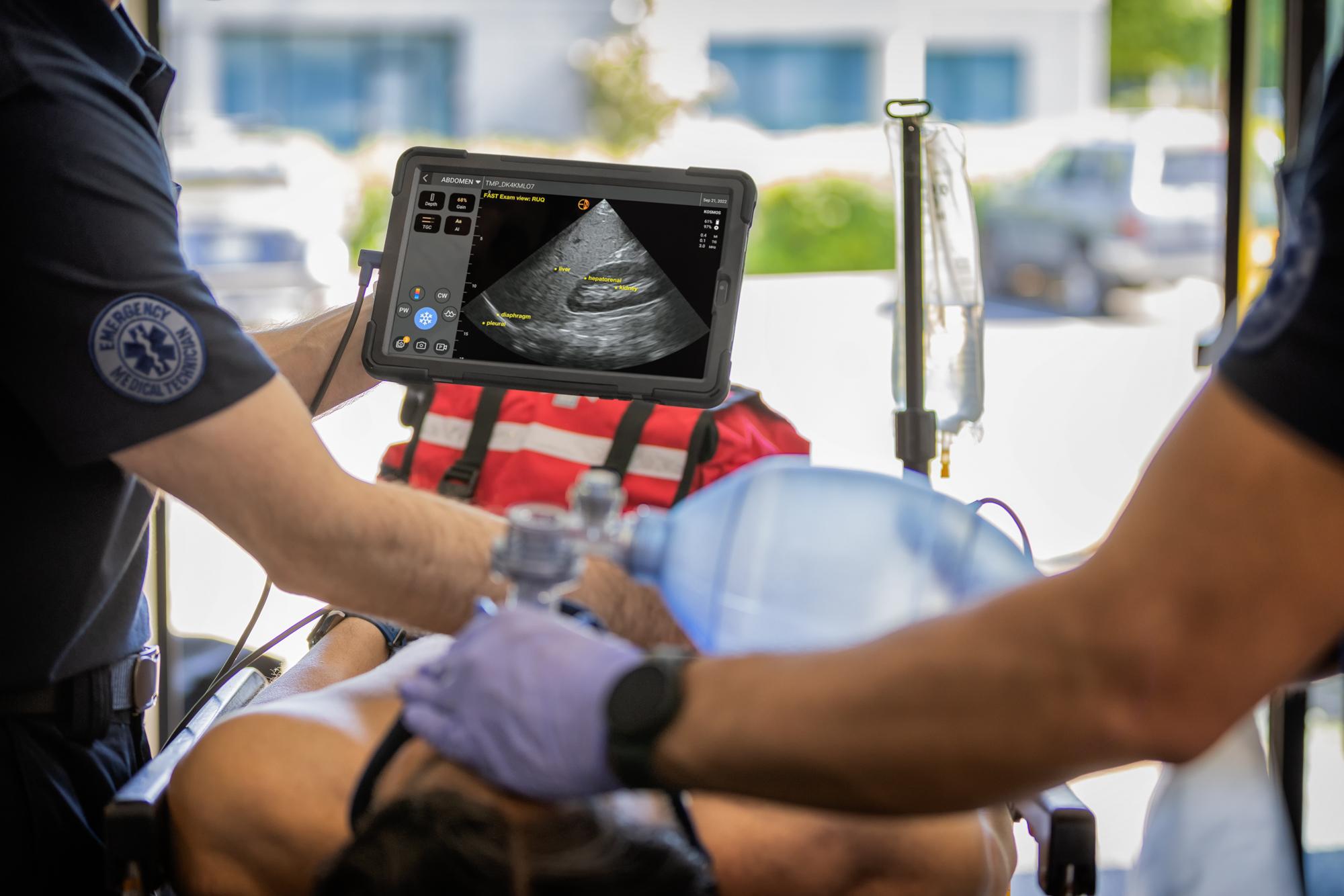
Applications for Emergency Medicine
The American College of Emergency Physicians (ACEP) has published ultrasound guidelines outlining both the core and advanced ultrasound applications the provider should integrate into clinical practice. The core applications include:
Focused assessment for trauma (E-FAST), abdominal, cardiac, lung, deep venous thrombosis (DVT), Cardiac arrest, evaluation of shock and hypotension, procedural guidance, soft-tissue/MSK, sonography in sepsis, and GYN/first trimester ultrasound.
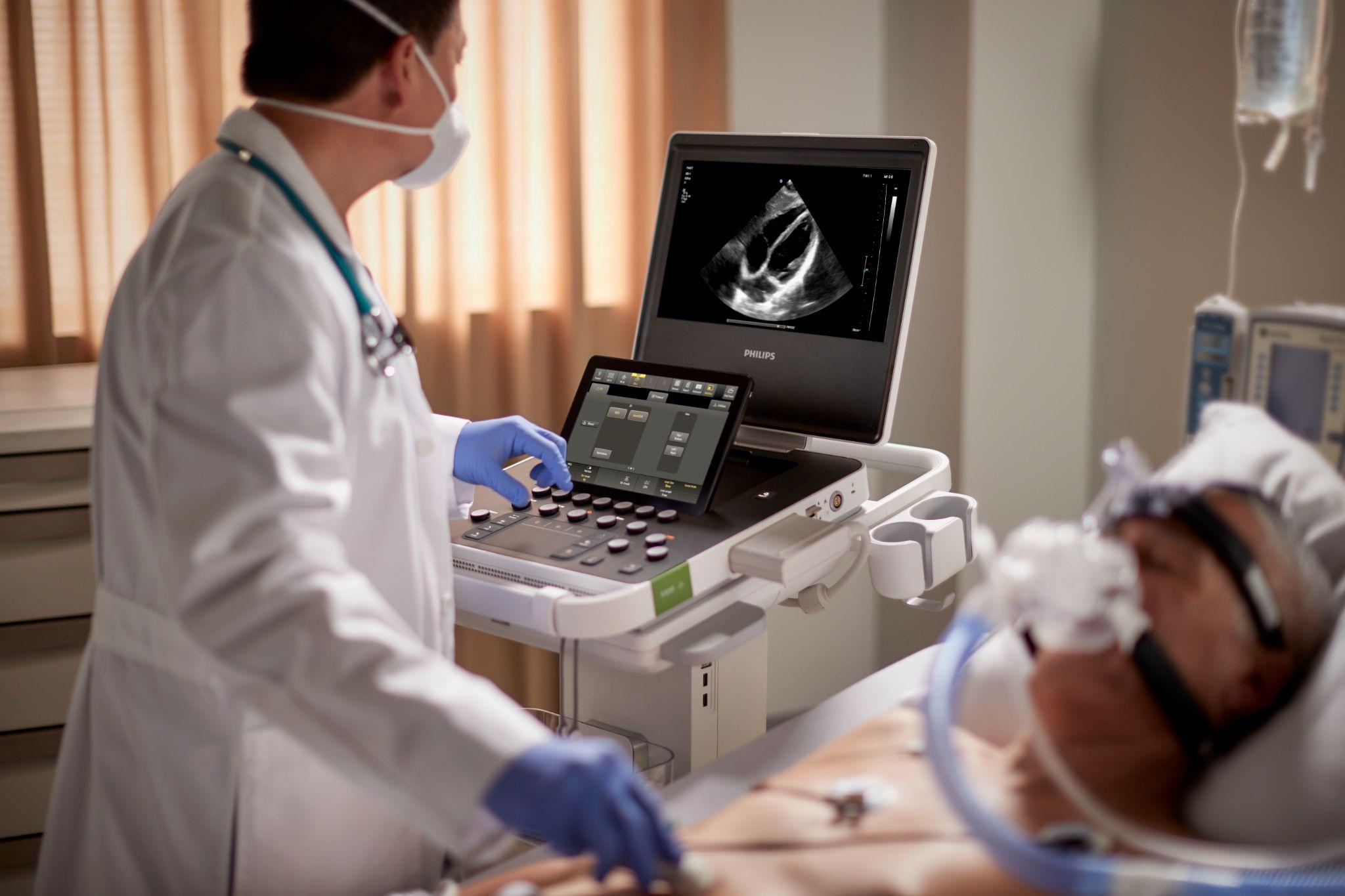
Applications for Critical Care Medicine
Core ultrasound applications for use in the critical care setting are based on ACEP, and AIUM ultrasound practice guidelines. These include the following applications: Cardiac, abdominal, lung, DVT, procedural guidance, cardiac arrest, evaluation of shock and hypotension, sonography in sepsis, and monitoring of trauma and other critically ill conditions.

Key Principles of POCUS for EM and CCU Settings
The use of ultrasound in both EM and CCU settings allows for rapid evaluation of vital organs such as the heart, lungs, and abdomen, aiding in the timely diagnosis of life-threatening conditions such as cardiac tamponade, pneumothorax, aortic dissection DVT/pulmonary embolism and more.
Common POCUS Applications for EM and CCU Settings
Cardiac Evaluation:
POCUS evaluation may be used to assess cardiac function, pericardial effusion/tamponade, cardiac arrest, or pre-arrest status.
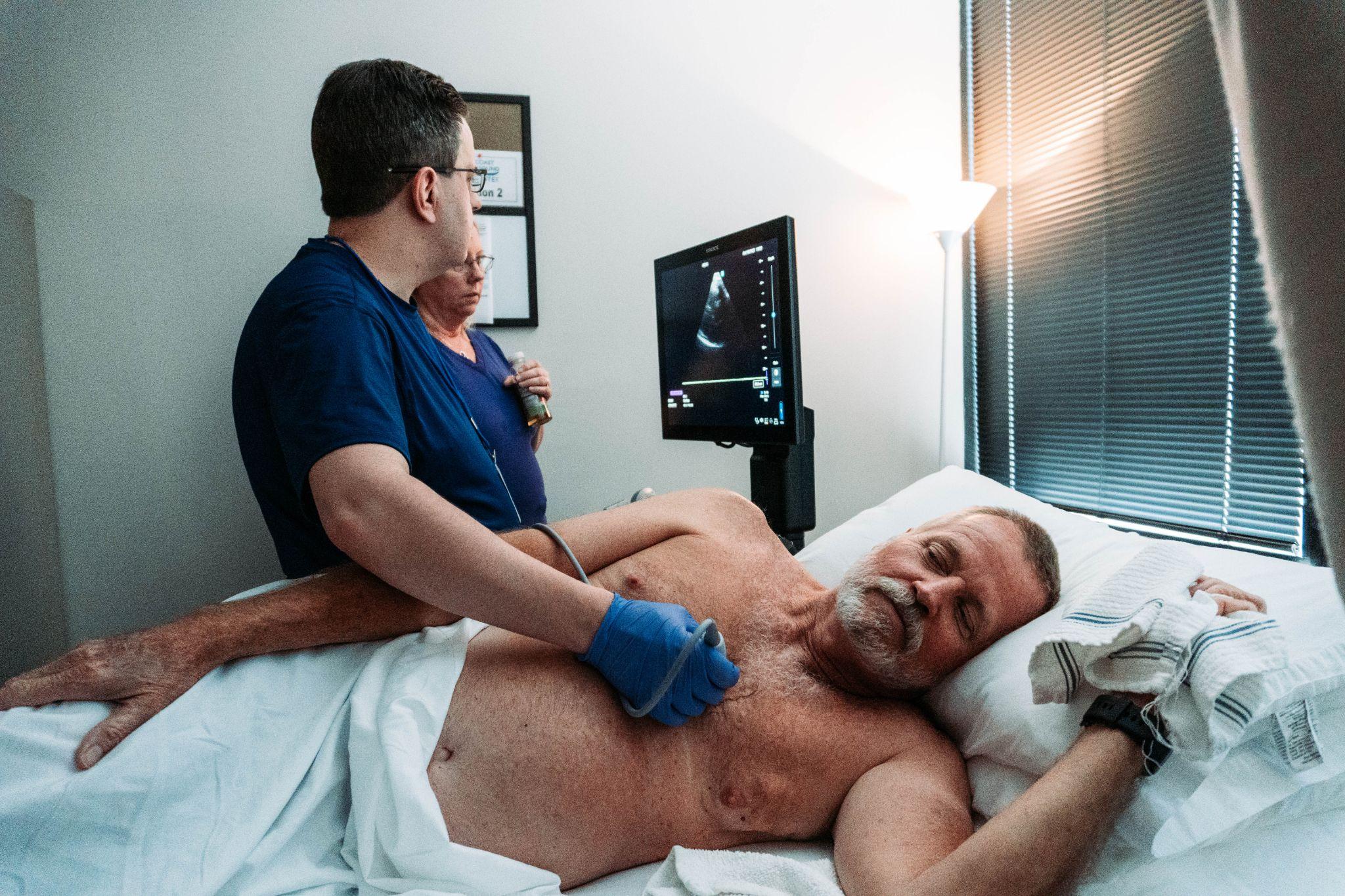
Pulmonary Assessment
Ultrasound can be used to evaluate various pulmonary conditions such as pneumothorax, pulmonary edema, pneumonia, and/or lung consolidation.

Abdominal Evaluation
POCUS can be used to assess a variety of abdominal pathologic conditions such as biliary and renal colic, AAA, bowel obstruction, appendicitis, presence of ascites, intra-abdominal bleeding, organ laceration/perforation, and more.

Focused Assessment with Sonography in Trauma (FAST)
Clinically significant injuries will be associated with the presence of free-fluid accumulating in dependent areas. The FAST exam can rapidly assess free intrathoracic and intra-peritoneal fluid. The Extended FAST (E-FAST) exam incorporates evaluation of the lungs for potential pneumothorax. The diagnostic information obtained contributes to decreased time to diagnosis and treatment, ultimately improving patient outcomes.
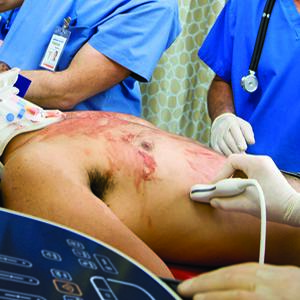
Procedural Guidance
The use of ultrasound to guide procedures such as vascular access, lumbar puncture, pericardiocentesis, paracentesis, thoracentesis, and nerve blocks enhances accuracy, reduces associated procedural complications, and improves patient safety.
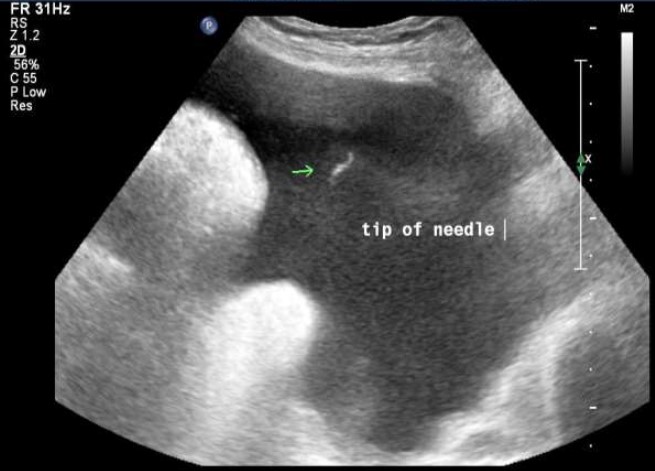
Soft-Tissue Evaluation
POCUS is a valuable tool to identify various soft-tissue abnormalities such as abscess, hematoma, foreign bodies, and for guiding soft-tissue procedures.

POCUS for Musculoskeletal Evaluation in the Emergency Department
POCUS for MSK evaluations can be used as a diagnostic tool to assess various MSK conditions such as joint effusion, tendon and ligament injuries, muscle tears, fractures, and dislocations. POCUS can also provide visual guidance for performing injection and/or aspiration interventions.

Monitor Response to Treatment
Ultrasound can be helpful to monitor response to treatment to assess changes in organ function and hemodynamics in response to treatment / therapeutic interventions.
Ultrasound Equipment Selection
There are a variety of ultrasound systems available and designed specifically for POCUS applications. These systems range in size from small hand-held systems, lap-top style, and smaller cart-based systems.
POCUS systems typically have less operating controls, and more focused imaging features, but maintain quality images for diagnostic accuracy. The more compact systems and focused capabilities contribute to the reduced cost as compared to the larger full- feature ultrasound systems.
It is important to recognize that in most cases, multiple transducers may be necessary to purchase in order to have the ability to perform the full scope of EM/CCU core applications.
The provider should evaluate several different brand systems to compare image quality, diagnostic capabilities, ease of use, cost, compatibility with existing facility patient record systems, and service benefits to ensure the system selected meets the needs of the specific practice and patient evaluation needs.
Not all systems are the same, and price does not necessarily dictate quality of the system. Evaluating multiple systems optimized for EM/CCU scanning at the same time, in a simulated clinical environment such as courses hosted by Gulfcoast Ultrasound Institute, can hep narrow down systems best-suited for your needs.
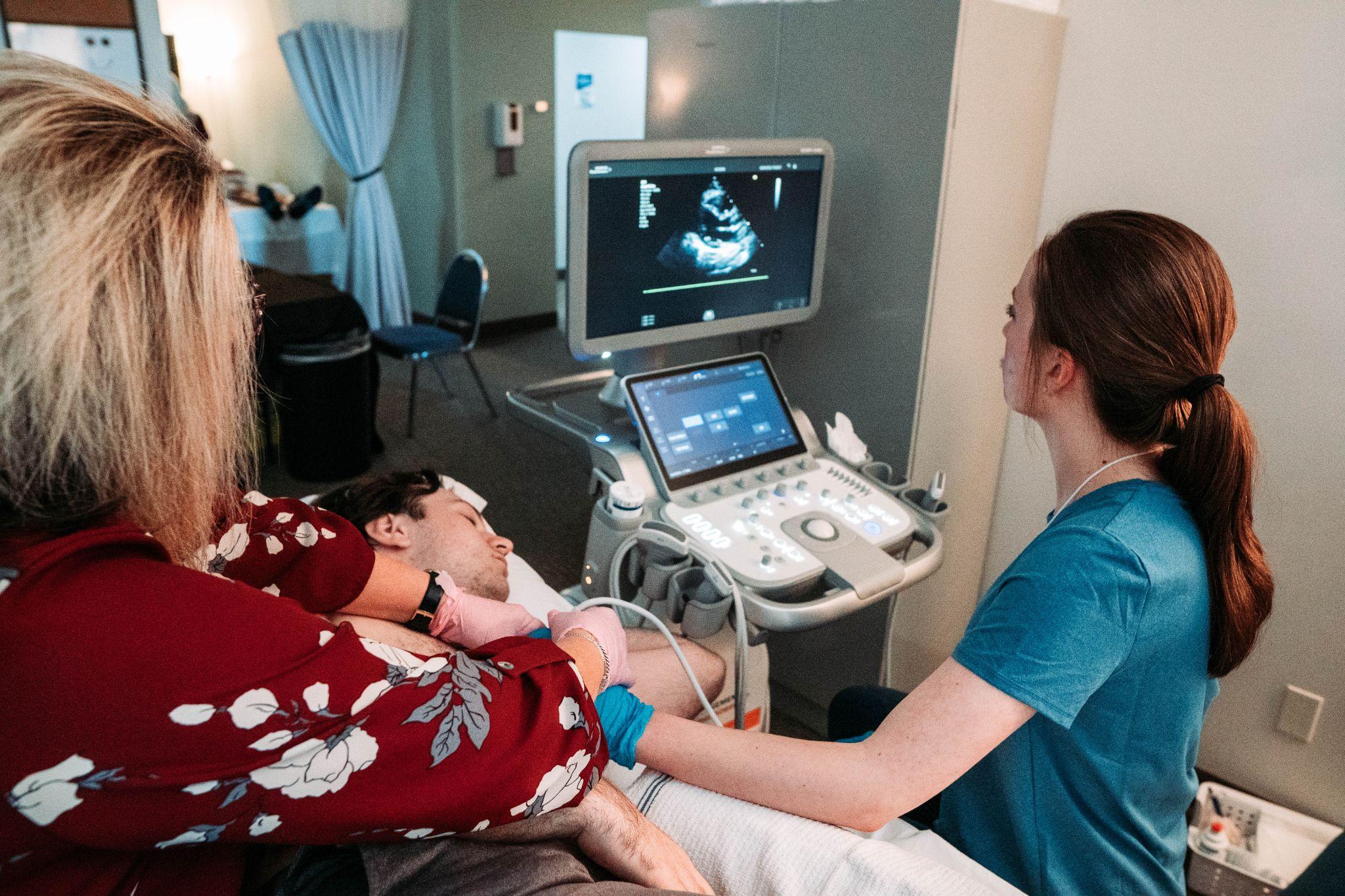
Initial Training for Emergency and Critical Care Ultrasound
The use of ultrasound for EM /CCU settings requires the provider to obtain comprehensive skills training to accurately perform the core ultrasound and advanced level POCUS applications.
Training Options:
POCUS training is included in some (but not all) residency programs and Ultrasound Fellowships are not required. Some professional societies offer ultrasound sessions during annual conferences, but these primarily serve as an introduction to the use and benefits of ultrasound in the EM/CCU setting. Hands-on sessions are commonly conducted in large groups, therefore not providing sufficient skills training to have the confidence and competence to immediately integrate the skills learned into clinical practice.
Attend Specialized Training Programs:
Training should be taught by leading EM/CCU ultrasound experts and include didactic sessions, case presentations, and substantial hands-on scanning sessions conducted in small groups (no more than 3:1 participant to instructor ratio).
The provider should enroll in a specialized training program that is designed to offer comprehensive education in ultrasound techniques, protocols, interpretation, and substantial scanning skills sessions specific to emergency and / or critical care settings (See Gulfcoast Ultrasound Institute training options below).
Hands-On Experience:
Participate in hands-on training sessions, workshops, and clinical rotations to develop proficiency in performing and interpreting ultrasound examination in the emergency and critical care settings. These experiences will allow you to gain practical skills and confidence in utilizing ultrasound technology in the clinical practice.
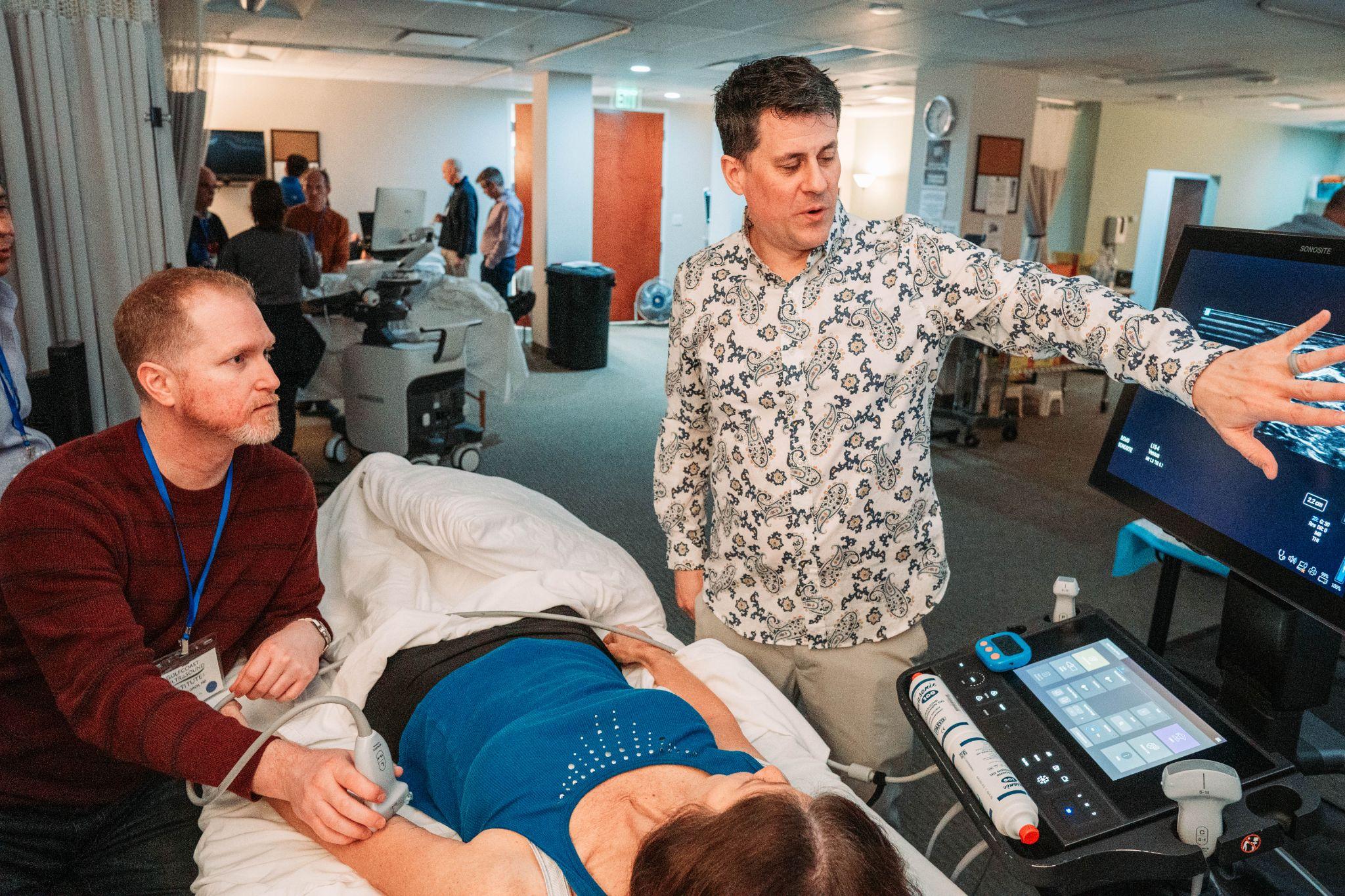
How to Become Certified
Achieve Certification:
Upon completing the required training and clinical experience, you can pursue certification in Emergency / Critical Care Ultrasound through recognized certification bodies. These organizations typically require the candidate to pass a written examination and/or online exam, plus submit ultrasound cases and/or a log of exams performed to demonstrate knowledge, skills, and competency in emergency and critical care ultrasound. A signed clinical verification form is also commonly required.
Maintain Certification:
Once certified, it’s important to fulfill any ongoing requirements for certification maintenance, which may include continuing medical education credits, clinical practice hours, or periodic recertification examinations. Staying current with advancements in ultrasound technology and clinical practices is essential for maintaining competency in this dynamic field. This may be accomplished by utilizing online CME, attend a live hands-on workshop to further enhance scanning skills, or attend a live virtual conference/webinar.
Professional Development:
Engage in professional development activities, such as attending conferences, participating in research projects, and collaborating with colleagues in the field of emergency and critical care ultrasound. Continued learning and skill refinement are essential for providing high-quality patient care and staying abreast of emerging trends and best practices in ultrasound imaging.
Gulfcoast Ultrasound Institute is an approved education provider for offering preparation courses and resources to achieve and/or maintain certification.
Gulfcoast Ultrasound Institute Emergency and Critical Care Ultrasound Courses
The Gulfcoast Ultrasound Institute (GCUS) offers a wide range of courses specifically tailored to Emergency Medicine and Critical Care Ultrasound applications. A list of regularly scheduled programs offered include:
- Introduction to Emergency Medicine Ultrasound: This course is 3-days in length and taught by leading emergency medicine ultrasound experts. Topics included are based on ACEP ultrasound practice guidelines. Each participant receives generous hands-on scanning in a small group setting using standardized patient models and inanimate phantoms. A log of exams performed is also provided to use for hospital credentialing and/or certification purposes. The program is approved for AMA PRA Category 1 Credit™, ACEP credit, and ABIM MOC Credits.
- Introduction to Critical Care Ultrasound: This course is 2-days in length and topics are based on ACEP, and AIUM ultrasound practice guidelines. Taught by leading ultrasound experts, the course includes lectures, case presentations, and hands-on scanning with a 3:1 participant to instructor ratio using standardized patient models and inanimate phantoms. A log of exams performed is also provided to use for hospital credentialing and/or certification purposes. The program is approved for AMA PRA Category 1 Credit™, and ABIM MOC Credits.
- Advanced Emergency Medicine Ultrasound: The advanced emergency medicine ultrasound program is 2-days in length covering multiple topics based on ACEP and WINFOCUS ultrasound practice guidelines. Topics include Advanced Ultrasound Evaluation of Shock, MI and Complications, Evaluation of the Right Heart, Interactive Case Studies, Fluid Responsiveness, nerve blocks for Emergency Medicine Applications and Scrotal Ultrasound. The program is taught by leading emergency ultrasound experts with small group scanning sessions for individualized attention. A log of exams performed is also provided to use for hospital credentialing and/or certification purposes. The learner may choose to attend the combined introduction and advanced emergency medicine program to consolidate travel and time away from their clinical practice. The program is approved for AMA PRA Category 1 Credit™, ACEP credit, and ABIM MOC Credits.
- Advanced Critical Care Ultrasound: The advanced critical care ultrasound program is 2-days in length covering multiple topics based on ACEP, and AIUM ultrasound practice guidelines. Topics include Advanced Ultrasound Evaluation of Shock, MI and Complications, Evaluation of the Right Heart, Interactive Case Studies, Fluid Responsiveness, Cardiac Doppler, Focused Cardiac Calculations, and Ultrasound Evaluation of Cardiomyopathies. The program is taught by leading critical care and emergency ultrasound experts with small group scanning sessions for individualized attention. A log of exams performed is also provided to use for hospital credentialing and/or certification purposes. The learner may choose to attend the combined introduction and advanced emergency medicine program to consolidate travel and time away from their clinical practice or attend each specific program separately. The program is approved for AMA PRA Category 1 Credit™, and ABIM MOC Credits.
- Point-Of-Care (POCUS) Ultrasound: These courses are structured in a blended-education format including a comprehensive online course incorporating lectures and case presentations in an interactive format. The participant completes the online course prior to attending 1 - 2 day hands-on only workshop at the Gulfcoast Ultrasound Institute education facility. Each learner has 15 months unlimited access to the online course to reinforce the skills learned upon return to the clinical practice. The hands-on sessions are conducted in a small group setting (= 3:1 participant to instructor ratio) and taught by leading ultrasound experts using standardized patient models and inanimate phantoms. Applications covered are based on the specialty track selected and corresponding online course topics. The POCSO programs provide a convenient and flexible option to obtain comprehensive ultrasound training and/or enhance skills training for improved competence.
- Simulation-Based Training: Gulfcoast Ultrasound Institute integrates simulation-based training sessions into the regularly scheduled POCUS programs that simulate real-life emergency/critical care scenarios, allowing participants to practice ultrasound techniques, clinical decision-making, and communication skills in a controlled environment. These sessions provide valuable opportunities for skill development, teamwork, and crisis management in a role-play setting.
- Online Learning: Gulfcoast Ultrasound Institute provides online learning modules and resources covering a wide range of topics related to emergency medicine and critical care ultrasound. These modules offer flexibility for healthcare professionals to learn at their own pace and conveniently access educational materials from anywhere with an internet connection. If hands-on skills training is needed, the learner may attend a point-of-care hands-on workshop, coordinate a private one-on-one hands-on session, or arrange for a group skills training program onsite at their healthcare facility.
- Customized Training Programs: Gulfcoast Ultrasound Institute also offers customized training programs tailored to the specific needs and objectives of healthcare institutions or professional groups. These programs can be designed to address specific clinical challenges, procedural competencies, or departmental requirements related to emergency and/or critical care ultrasound applications.
Register Today!
Are you ready to expand your skills to integrate ultrasound into clinical practice? Start your ultrasound journey or expand your current skill set by attending a course and learn from the leading ultrasound experts. With 40 years of experience and a 99.9% over-all satisfaction rating for meeting or exceeding educational objectives you will be able to immediately integrate the skills learned into clinical practice, reduce time to diagnosis, and improve patient outcomes. What are you waiting for? Contact us today!

